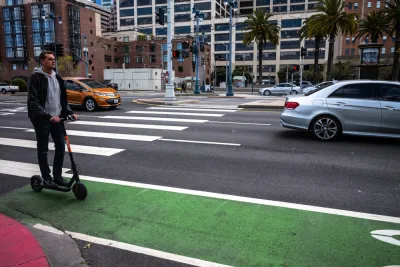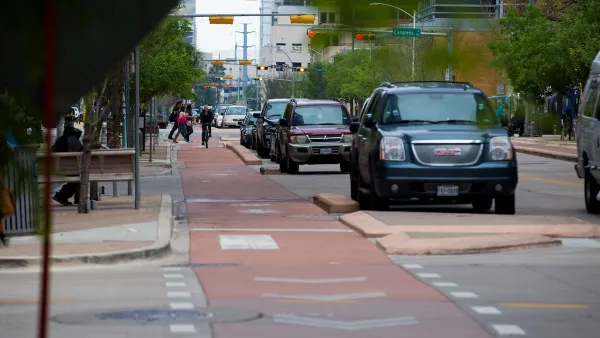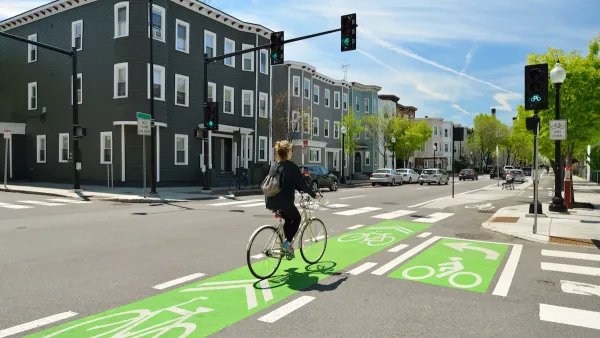With the popularity of electric scooters, it seems like non-automobile travel is gaining a large new constituency. Making room for scooters raises big questions of infrastructure that might not be answered first by nomenclature.

"In a matter of months, electric scooter companies have set up fleets in dozens of American cities," writes Angie Schmitt to raise a big question. "Where do these vehicles belong on our streets?"
"The most logical place for them seems to be bike lanes. That’s how scooter firm Bird sees it — the company wants to help cities build bike lanes so its customers can safely ride in the street without impeding people on sidewalks," according to Schmitt.
But bike lanes are for bikes, and many opponents of bike infrastructure complain about how seldom they are used. But with this new mode taking to the streets and proving very popular, perhaps it's time to completely reframe the bike lane.
Jarrett Walk suggests in a recent blog post that we rethink the different kinds of lanes on the street after carefully considering their defining qualities. The key characteristics to consider: speed and width.
All this came up because I was trying to think of the correct new term for “bike lane” as we proliferate more vehicle types that run more or less at the speed and width of bicycles but are clearly not bicycles, such as electric scooters. The two logical terms seem to be narrow lane or midspeed lane. One way or another the two concepts will need to track with each other.
FULL STORY: Do We Need a New Theory and Name for “Bike Lanes”?

National Parks Layoffs Will Cause Communities to Lose Billions
Thousands of essential park workers were laid off this week, just before the busy spring break season.

Retro-silient?: America’s First “Eco-burb,” The Woodlands Turns 50
A master-planned community north of Houston offers lessons on green infrastructure and resilient design, but falls short of its founder’s lofty affordability and walkability goals.

Delivering for America Plan Will Downgrade Mail Service in at Least 49.5 Percent of Zip Codes
Republican and Democrat lawmakers criticize the plan for its disproportionate negative impact on rural communities.

Test News Post 1
This is a summary

Test News Headline 46
Test for the image on the front page.

Balancing Bombs and Butterflies: How the National Guard Protects a Rare Species
The National Guard at Fort Indiantown Gap uses GIS technology and land management strategies to balance military training with conservation efforts, ensuring the survival of the rare eastern regal fritillary butterfly.
Urban Design for Planners 1: Software Tools
This six-course series explores essential urban design concepts using open source software and equips planners with the tools they need to participate fully in the urban design process.
Planning for Universal Design
Learn the tools for implementing Universal Design in planning regulations.
EMC Planning Group, Inc.
Planetizen
Planetizen
Mpact (formerly Rail~Volution)
Great Falls Development Authority, Inc.
HUDs Office of Policy Development and Research
NYU Wagner Graduate School of Public Service





























